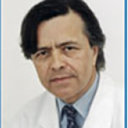Clinical characteristics of idiopathic ulcerative colitis in children.
Mo kle
Abstrè
BACKGROUND
Idiopathic ulcerative colitis (IUC) represents a rare disease of childhood. It usually occurs at age over 10 years, and below that exceptionally rarely.
OBJECTIVE
The aim of the paper was to analyze the clinical signs, symptoms and therapeutic procedures in children with IUC.
METHODS
The aims of the paper were based on a sample of 17 children (11 male and 6 female, mean age 11.90 +/- 3.50 years; range 3.8-17.5 years) with IUC. The disease diagnosis was based on characteristic endoscopic and pathohistological findings.
RESULTS
The basic signs of the disease involved chronic mucosal haemorrhagic diarrhoea which was confirmed in 16 of 17 patients, with body weight deficiency (10), recurrent abdominal pain (6), fever (5), slowed-down maturation (5), marked anorexia (4), and tenesmus (3).Two patients had recurrent aphthous stomatitis, 2 anal fissures, 2 arthralgia, one autoimmune hepatitis and one pyoderma gangrenosum. None of the children had longitudinal growth retardation. Elevated sedimentation rate and C-reactive protein in blood were registered in 11, sideropenia in 10, anaemia in 6 and hypoalbuminemia in 3 patients. The remission of proctosigmoiditis and left-sided colitis was achieved with aminosalicylates, and of pancolitis with the combination of aminosalicylates and glucocorticoids, except in cases of steroid-dependent colitis, which additionally required azathioprine.
CONCLUSIONS
The main signs of IUC in children are chronic mucous haemorrhagic diarrhoea, body weight loss and sideropenic anaemia, while the basic therapy consists of aminosalicylates, and in more severe cases of the disease the initial use of glucocorticoids and later azathioprine.


